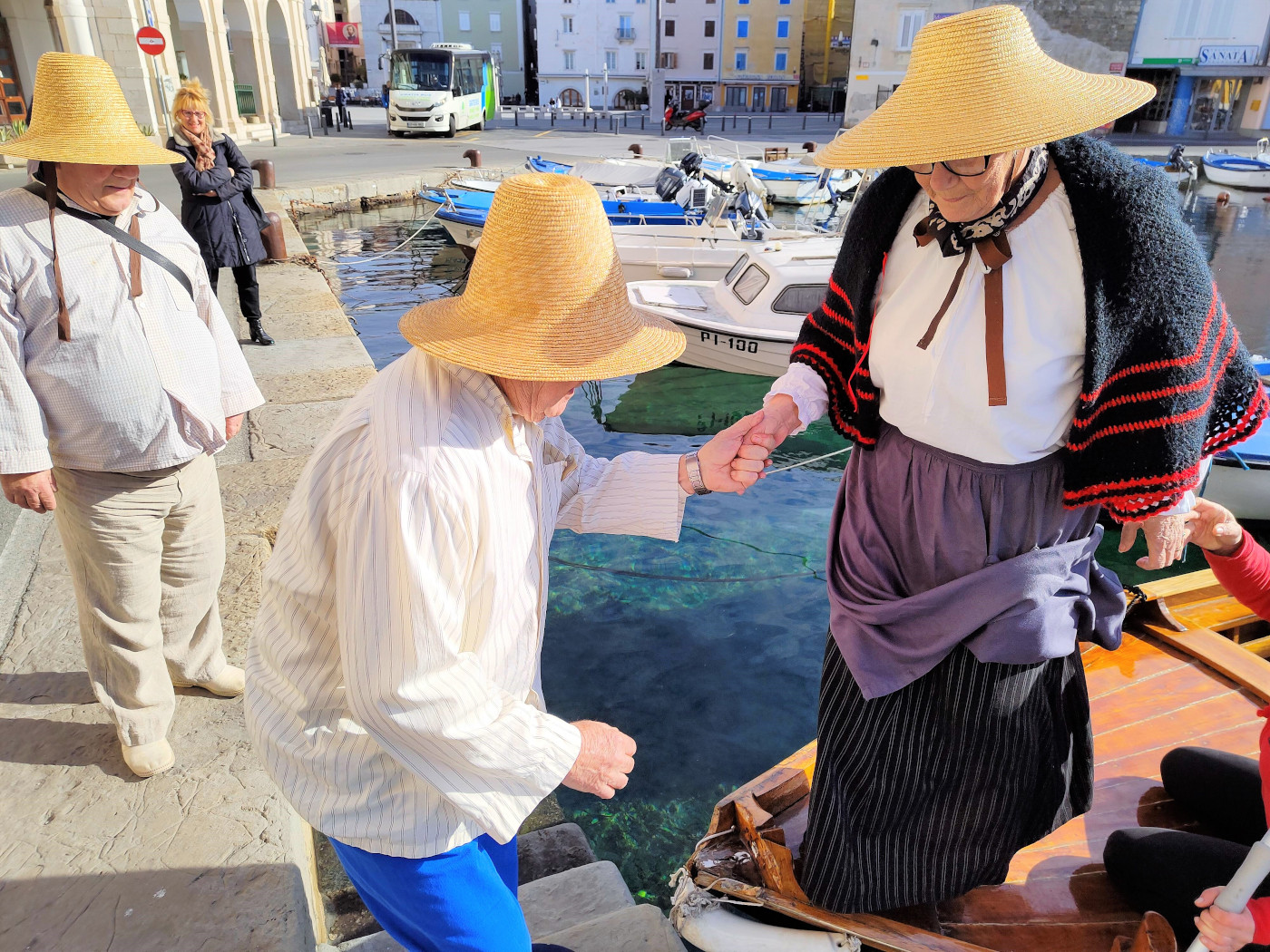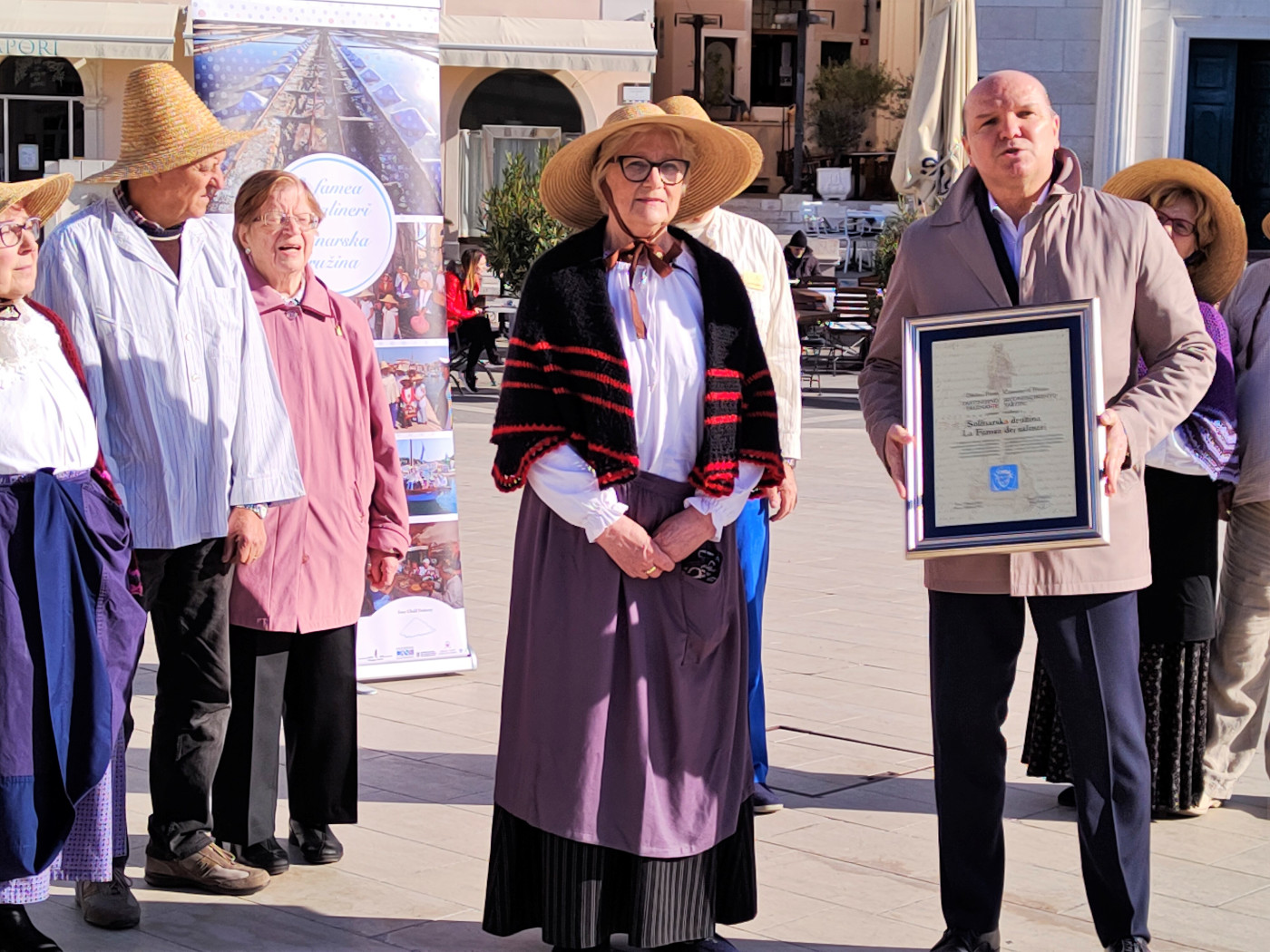Il nostro presente è stato costruito con la produzione del sale

Concorso per creare il nuovo logo dell’Unione Italiana
02/11/2022
Carnevale 2022
02/18/2022
Anche quest’anno l’8 febbraio, giorno in cui in Slovenia si celebra la cultura, è passato per la seconda volta senza la consueta cerimonia solenne, nel cui contesto le autorità locali rendono omaggio a tutti coloro che si sono distinti e che hanno fatto sì che Pirano sia riconosciuta come un luogo dove sono di casa l’arte, la cultura e, naturalmente, molti artisti e operatori culturali. Ogni anno, ad uno di essi viene destinato un premio molto speciale intitolato all’artista più celebre di Pirano, Giuseppe Tartini.
Quest’anno il riconoscimento è probabilmente un po’ più speciale rispetto agli anni scorsi, poiché ricorrono 330 anni dalla nascita del grande violinista e compositore. Un po’? Forse sarebbe il caso di dire “un pizzico più speciale”. Un pizzico di sale. Sale di Pirano. L’oro bianco di Pirano, come veniva chiamato un tempo, anche 330 anni fa, quando il neopapà di Tartini, annotava ogni giorno l’esatta quantità di sale prodotta dalle mani laboriose degli instancabili salinai. Chissà quanto oro bianco ha prodotto il mare il giorno in cui è venuto alla luce il piccolo Giuseppe. E chissà cosa avrebbe detto il grande Giuseppe quando avrebbe saputo che il premio che porta il suo nome è stato conferito a un gruppo che da 17 anni si impegna per conservare, tutelare e trasmettere alle nuove generazioni la secolare tradizione della produzione del sale.
Il sindaco di Pirano, Đenio Zadkovič, nell’anno in cui si celebra il 330.esimo genetliaco del più illustre figlio di Pirano, ha assegnato il Premio Tartini al gruppo artistico-culturale della Comunità degli italiani, conosciuto come “La famea dei salineri”.
Nella cornice della premiazione è stata anche ricordata la “Festa dei salinai”, che si si festeggiava a Pirano in concomitanza con la giornata del patrono San Giorgio. In quell’occasione, gli ex salinai salpavano in barca verso le saline, dove passavano tutta l’estate a lavorare. Fu proprio in questo giorno che nel 2004 una barca con a bordo la “Famea dei salineri” salpò nuovamente dal molo di Pirano verso le saline. Era più numerosa rispetto a quella di oggi, ha osservato Giorgina Rebol, che negli ultimi anni è alla guida del gruppo.
“La famea dei salineri è cambiata in tutti questi anni. Un tempo il gruppo era più nutrito, ma ora siamo restati in pochi. I giovani vengono, però poi crescono e se ne vanno, quindi restiamo più o meno sempre gli stessi a preservare questo patrimonio culturale,” ha affermato in occasione del conferimento del premio.
Nel suo discorso, il sindaco Đenio Zadkovič, ha sottolineato l’importanza che ricoprivano e che tuttora ricoprono le saline. Uno spazio unico nel suo genere e difficilmente rintracciabile così ben conservato in altre parti del mondo.
“La città di Pirano prosperò grazie alla produzione del sale. Il nostro presente è stato costruito con la produzione del sale. Abbiamo deciso di conferire questo riconoscimento a ‘La famea dei salineri’ anche perché crediamo che sia importante continuare a tutelare questa tradizione e sensibilizzare le giovani generazioni riguardo alla produzione del nostro sale, che è conosciuto in tutto il mondo”, ha rimarcato il primo cittadino, conferendo il riconoscimento in Piazza Tartini.
Giorgina Rebol e il resto dei membri della famiglia sono cresciuti con il sale e accanto ad esso e, come ha sottolineato, non vuole che la tradizione del sale venga dimenticata. In passato le saline hanno offerto lavoro a molti piranesi, permettendo loro di vivere una vita decente. Il fatto che i loro antenati abbiano vissuto qui li incoraggia a conservarne la memoria.
“Più o meno tutti lavoravano nelle saline. Conosciamo questo lavoro e raccontando le storie dei salinai di una volta vogliamo tramandare il sapere ad esso legato”, ha precisato.
Per loro rappresentare Pirano e le saline è anche un grande onore, ed è per questo che il Premio Tartini significa così tanto per loro, ha sottolineato Giorgina.
“Il Premio Tartini ci infonde motivazione per presentare al mondo le nostre saline e il modo di produrre il sale. In nessun luogo troverete un sale buono come il nostro”, ha affermato orgogliosa.
La cerimonia di premiazione che si è svolta in piazza Tartini è stata ripresa e pubblicata in forma di video-cartolina alla vigilia della Giornata della cultura. Il filmato è disponibile sul sito web e sulla pagina Facebook del Comune.
Testo e foto: Nataša Fajon
Traduzione: Kris Dassena


























